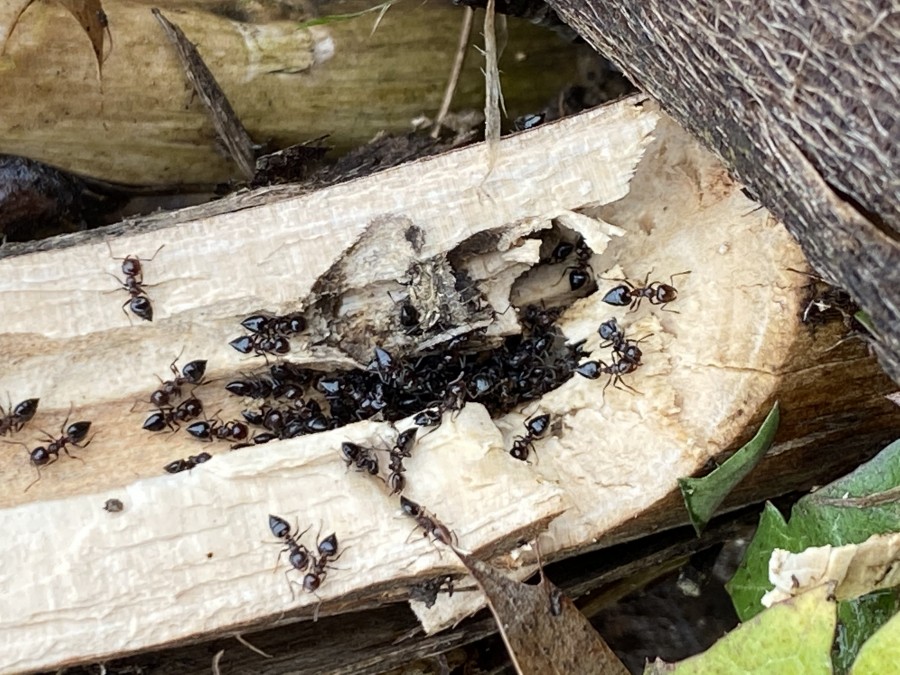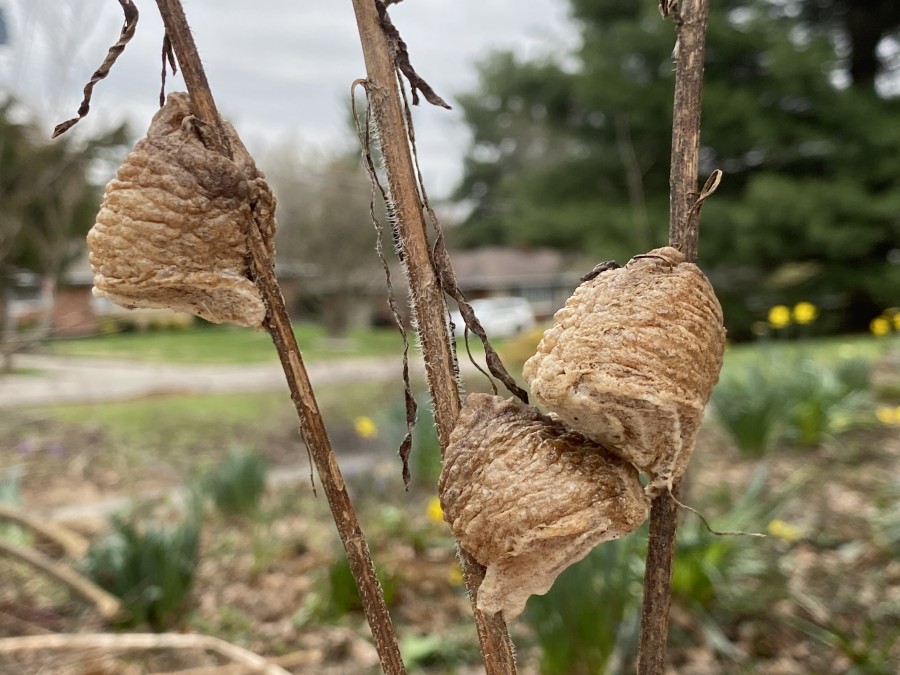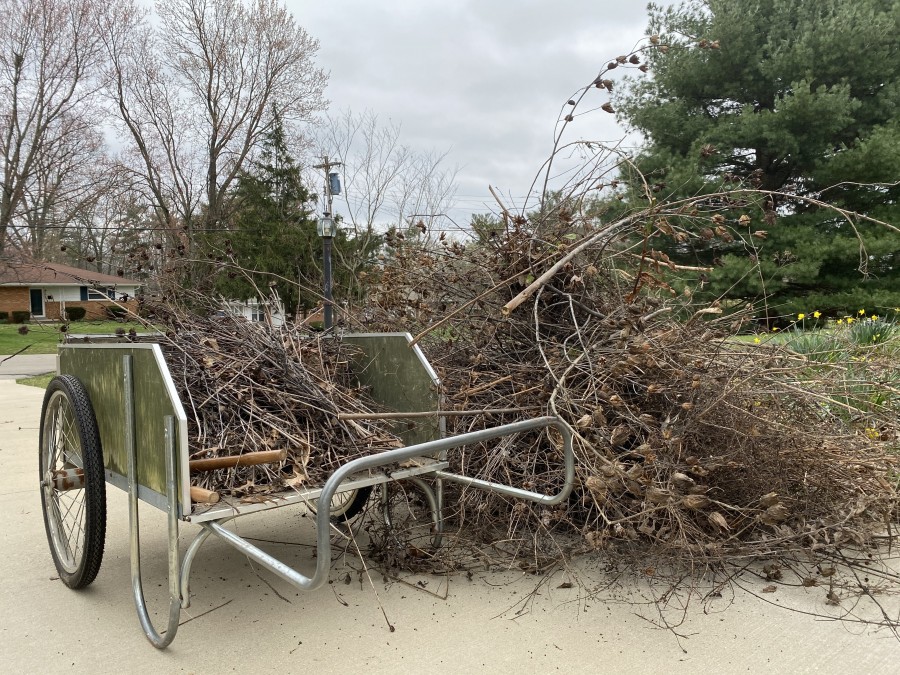Blog
Spring Cut Back
By Jason Neumann
My yard in suburban Blue Ash is providing solace from the constant news updates.
Like most people, I’ve been holed up at home. My calendar cleared, I can no longer make excuses for not tending to the yard. It’s time for the annual spring cut back when all of my native perennial wildflowers are cut to the ground. This clears the way for spring sprouts and keeps the beds tidy for the neighbors. I contemplated a mini-prairie burn but erred on the side of prudence – such a project would probably be frowned upon in suburban Blue Ash.

Over the winter I left my native perennials standing for visual interest and for wildlife. Birds ate the seeds while the dry stems provided winter shelter for bees, flies, beneficial wasps, moths and other insects which will soon emerge.

While trimming plants, I found three rounded praying mantis egg cases. These are introduced Chinese mantis (our native Carolina mantis cases produces longer, thinner egg cases). Praying mantis are like wolves of the garden, indicating sufficient prey.
If there were no insects, there could be no praying mantis. I took this as a good sign. There were very few insects around when I moved here in spring of 2009. My gardening practices must be working.

All of my cuttings, and there are a lot, are loosely piled in the “to be composted mound” in the backyard or used as mulch under my 12 pawpaw trees (which, by the way, produced more than 90 pounds of pawpaw fruit last year). The key is to leave the pile loose so life on/in the stems can emerge. Some ecologically-minded yard tenders lay their cuttings out on the edge of the woods or loosely heap them onto a cumulative brush pile in a hidden location.
We humans can be so tidy that we don’t leave space for wildlife. The annual spring cut back should be a gentle process that looks good to us and provides maximum benefit for wildlife. I like knowing that I’m supporting nature which in turn provides peace and inspiration for me particularly during these tough times.
Community includes my natural world.